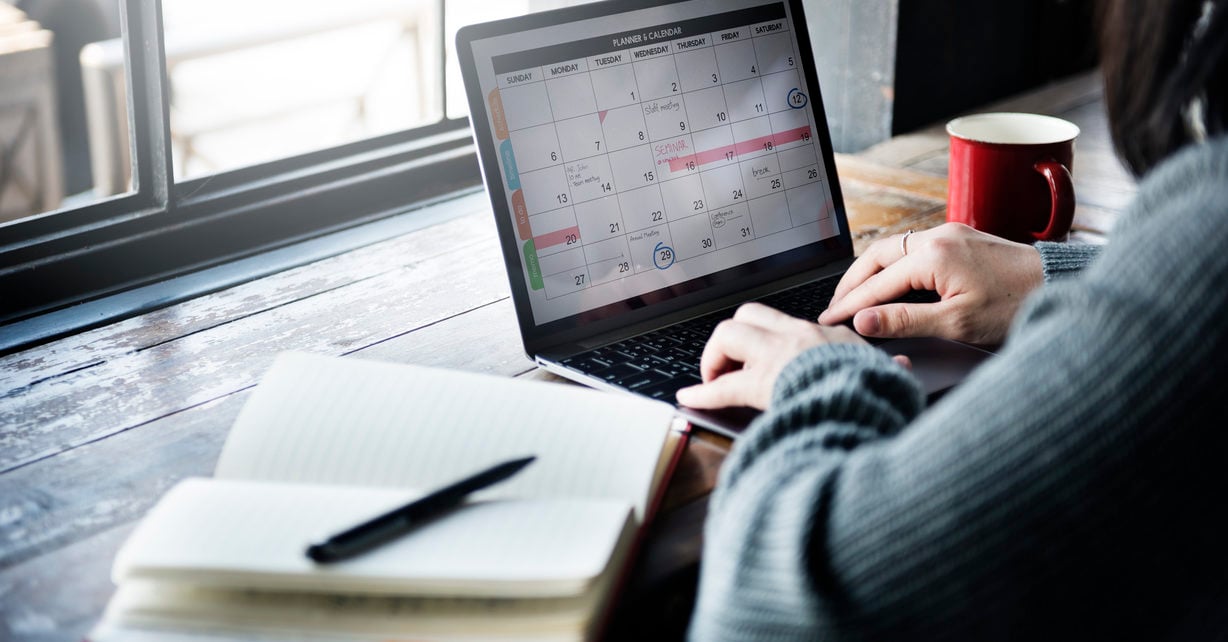Meetings are meant to get work done. But a “quick” meeting can easily escalate into a two-hour session that has gone completely off-topic. Or it can turn into an in-depth one-on-one conversation where everyone else is thinking about what they’d rather be doing. We’ve all been there.
How can you combat these issues and make meetings more meaningful and productive? What you do before and after the meeting makes all the difference.
Before the Meeting
1. Schedule a convenient meeting time
If you want full meeting participation, do everyone a favor and schedule the meeting at a time that works for everyone. You can use free apps like Doodle or Calendly to help you find a time that works.
If you really want a productive meeting, be strategic with scheduling. Yes, everyone may be available on Monday at 9:00 am, but that time slot makes it hard for attendees to come prepared. And if they’re not prepared, they won’t show.
Research by WhenIsGood.net suggests that people are most apt to attend meetings on Tuesdays at 3:00 pm. Meeting on Tuesday afternoon gives people time to prepare, but it’s still early enough in the day so they won’t just be watching the clock, waiting to go home. Tuesday also allows for enough time in the week to follow-up on the meeting’s action items.
Other tricks include scheduling meetings for very specific time slots, like 18 minutes for example. Everyone should be able to find 18 minutes in their day. Plus the shorter time means you have to stay focused and on topic.
The point is to be thoughtful when choosing a meeting time — and don’t be afraid to get creative.
2. Prepare an agenda
Prepare an agenda and share it with all participants prior to the meeting. Decide which topics will be covered, how much time will be devoted to each topic, and what actions need to be taken during the meeting. Also, communicate what you expect from participants so they know how to prepare.
With a clearly defined agenda, everyone knows the goals and objectives. Your agenda will also help you stay on track and stick to the allotted meeting time.
3. Find an appropriate location and get your software in gear.
Make sure your face-to-face meetings take place in a space that is big enough for all the participants and comfortable enough for everyone to be able to talk. Make sure your meeting place is also quiet where you won’t be disturbed by loud background noises such as coffee machines.
If you’re holding a virtual meeting, don’t let the technology get in the way. As the host, make sure everyone knows how to dial-in. There’s nothing more annoying than joining a meeting on time, to then wait another ten or fifteen minutes to get the show on the road. If you’re hosting an online meeting, make sure you’re using a software you’re familiar with, and be sure you’re the first one on.
Post-Meeting
4. Share all meeting documentation with participants
Businesses are increasingly using cloud sharing apps, such as Google Drive to upload important documents in one central location. One advantage of Google Drive is the ability to track changes in the documents by simply clicking “File” and “See revision history.” You’ll then get a list of when changes have been done and who did them. You’re also able to revert back to older versions. This ensures that important information doesn’t get lost and that everyone is up to date with the most recent documentation.
The bottom line: Just because the meeting is over, doesn’t mean the collaboration has to stop. Make sure everyone has access to the important documentation and has editing access so they can keep the ball rolling.
5. Keep up to date on tasks
Keep up to date on tasks using project collaboration suites such as Trello, Asana, or whatever other tools you use. Use these tools to keep track of project statuses and potential blockers. Then schedule follow-up conversations with individuals as needed before the next meeting. This cuts out unnecessary talk and tedious updates at your next meeting, allowing it to be more meaningful.
6. Ask for feedback
Send out a post-meeting message asking participants for ideas to improve meetings – but keep it short and sweet. The last thing you want to do is add unnecessary work. Try sending out a short questionnaire using apps such as SurveyMonkey, allowing a space for comments. And then remember to apply feedback to your next meeting!
If you follow these steps you’ll not only be super-organized for your meetings, you’ll maximize productivity and participation. You’ll be hosting the best meetings in your company in no time.
